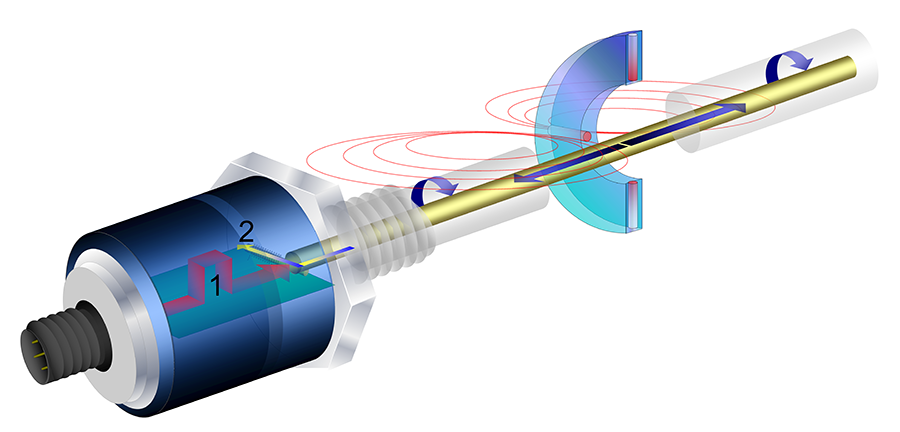Magnetostriction is a property of magnetic materials that causes them to change size or shape during magnetization. This property is used in magnetostrictive sensors to detect position.
The technique is well-established and is used in various market areas to detect position. Magnetostrictive sensors have very high accuracy and contactless operation, which provides an extremely long mechanical lifetime.
The sensors are available as linear sensors with mechanical housing and as cylinder sensors mounted inside pneumatic or hydraulic cylinders. Combined with a float, the sensors can also be used as level sensors/transmitters.
How a Magnetostrictive Sensor Work
The magnetostrictive sensor contain:
- Electronics
- Sensor rod
- Permanent magnet
A waveguide is mounted inside the sensor rod; this waveguide is a magnetostrictive wire.
The permanent magnet travels along the sensor rod. In a cylinder, the magnet is mounted in the piston of the cylinder, and in a level sensor, the magnet is placed in the float.
The electronics apply a current pulse to the waveguide. The current and the permanent magnet cause the waveguide to twist; this is called the Wiedemann effect. As the current is applied as a pulse, the twisting of the wire will behave as an ultrasonic wave that travels with the speed of sound in the material, hence the name waveguide. The wave is detected by the sensor electronics, and the position is calculated by the sensor as the time and speed are known.
The wave will also travel in the opposite direction, away from the electronics towards the end of the sensor rod. There, the wave is absorbed by damping elements; therefore, magnetostrictive sensors have a non-active zone at the end of the sensor rod.
Our magnetostrictive sensors are available with different signal outputs such as voltage, 4-20 mA, Profibus, SSI etc.
Flexible Electronics Placement
It is not necessary for the sensor electronics to be situated together with the sensor rod; they can be placed elsewhere. This is an advantage if there is limited space to mount the sensor rod, for example, in a cylinder. GYPMR is a cylinder sensor model that is designed this way, and the electronics can be mounted far away from the sensor rod.
Explore Further
Explore our assortment of magnetostrictive sensors:
Feel free to contact us if you have any questions. We will help you finding the best solution for your application.


